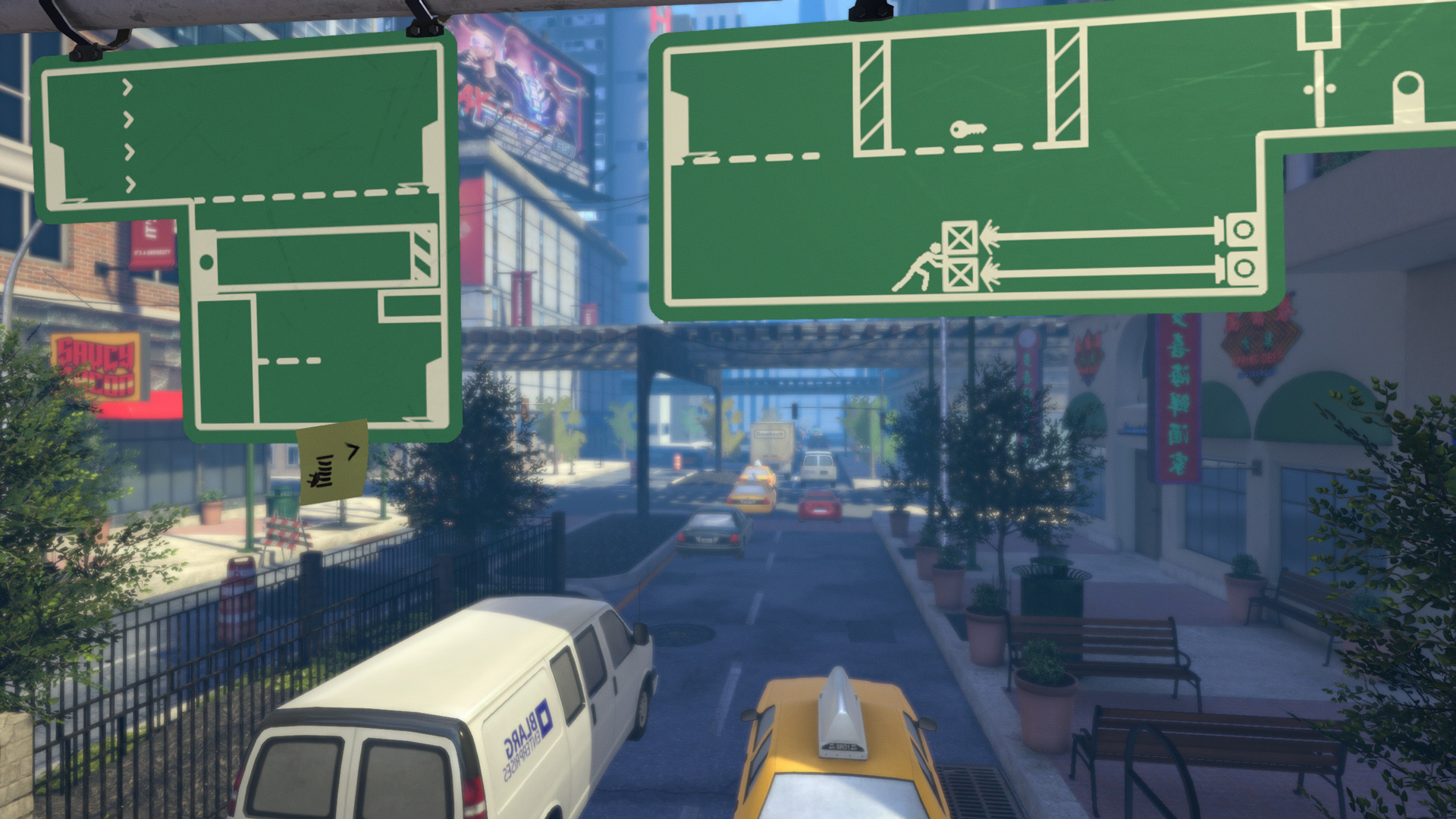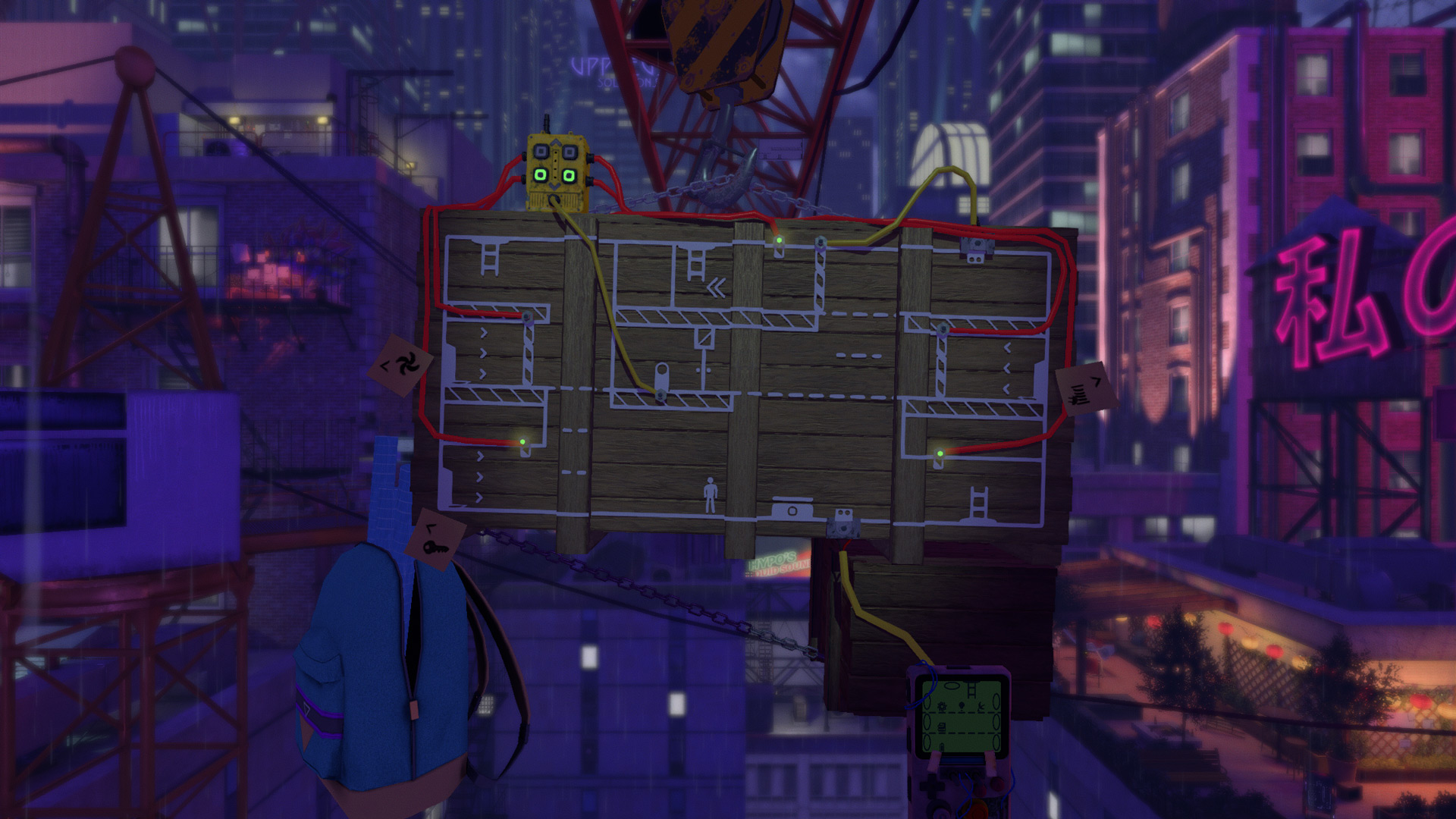How a joke about bathroom signs inspired one of the best indie platformers hitting PS5 this year
Skookum Arts reveals the inspirations behind The Pedestrian ahead of its PS5 and PS4 debut

Developers talk a lot about signposting when figuring out how to gently guide players from Point A to Point B, but The Pedestrian takes that strand of game design to an entirely new level. Its premise, a 2.5D platformer that takes place entirely within the confines of public signage, is both deceptively simple and ingeniously inspired.
Its protagonist is nameless, but universally recognised, aiding people all over the world with their repertoire of informative poses, from riding a bike and dropping litter into waste bins, to dashing straight for the fire exit in a calm and orderly manner. For developer Skookum Arts, however, it was one sign in particular that inspired the origins of The Pedestrian: the twin male and female stick figures whose appearance offer hope and relief to anyone desperate for the loo amongst unknown surroundings.
"The Pedestrian started as a silly mobile game called Bathroom Break," reveals lead artist Daniel Lackey. "It was mostly a joke about the bathroom symbol, in the style of an endless runner. The object was to get the character to the bathroom before he had an accident... wow, am I glad it evolved away from that, but maybe my sense of humor hasn’t changed as much!"
Stick it to the man


More than just a mini Monster Hunter, Little Devil Inside leads a new wave of PS5 indies
That joke eventually got serious, however, as Daniel, his brother Jed, and childhood friend Joel realised that they had the foundation for something special on their hands. The trio decided to quit development on their current project, an unfinished survival game called The Wilderness, and concentrate all efforts on bringing The Pedestrian to life. The project went through multiple iterations and genres before its 2.5D platformer DNA took shape, as Lackey explains.
"It changed from an endless runner, to a traditional platformer, to a stealth game. Once we started working on stealth mechanics, I realized I was having more fun in the level editor that Jed made than I was when I was actually playing the game. We thought, heck, why not make this the main mechanic!"
The Pedestrian's gameplay thus began to revolve around the idea of swapping and switching out pieces of an environment to allow the character to progress, with the process of connecting doors and ladders between areas lending a compelling puzzle element to the platforming. Combine that with Lackey's original Bathroom Break idea, and it didn't take long for Skookum to realise that a full commitment to the world of public signage made perfect sense.

"In most modern games, I find myself getting frustrated with the many layers of menus and walls of text," says Lackey. "They feel unnecessarily bloated. By contrast, the public sign system was designed to communicate ideas that could be understood at a glance. So, that’s what we strived for. Optimizing communication while minimizing any unnecessary information so that ideas can be communicated simply and easily."
Weekly digests, tales from the communities you love, and more
With its unique aesthetic decided, Skookum then had the difficult task of figuring out what the player would see beyond the borders of the public signs in which the core gameplay took place. After much consideration, the team set about creating a fully realised urban backdrop for the titular pedestrian's adventures, which – according to Lackey – gave them the added task of building something that "was more closely related to an FPS or a 3D adventure game".
"From a gameplay point of view, you are only ever traveling left, right, up or down, but the actual work we put into making the camera movement fluid and dynamic as it swoops down city streets and around corners is far more complicated than your typical side scroller. We said many times while working on the game that our main character is not the little pedestrian – it’s the city. So we had to treat it that way in terms of focus and attention to detail. It was an enormous challenge to concentrate detail where it was needed. Everything was meticulously made from scratch by us. Even though it was a painstakingly slow process, I think it was worth it in the end to get such a hand crafted feel."
Good signs ahead

"Our main character is not the little pedestrian. It’s the city."
Daniel Lackey
The Pedestrian launched on PC last year to rave reviews, and that success has enabled Skookum to start bringing the game to other platforms, starting with PS4 and PS5 later this week. "Developing for the PlayStation platforms has been quite a challenge," says Lackey of the porting process, "but was definitely worth it. Unlike Steam, where you do almost everything yourself through their online tools, PlayStation assigned us an account manager, who has been wonderful and helped us with a bunch of things."
The studio even got to make its PlayStation announcement during a State of Play live stream last year, though that its console exclusivity isn't permanent, as releases for Xbox One, Series X/S and Nintendo Switch are also planned. Beyond that, Lackey says Skookum's sights "are set high", though don't expect a sequel to The Pedestrian anytime soon.
"As much as we’d like to make another one, because of all the untapped potential we have yet to explore, we decided that we need a break from it to avoid burnout. Taking a breather by working on something entirely different will be good for us. I can say from experience, most burn out is self inflicted. It’s understandable, because game developers take a lot of pride in their work. But it takes a lot of work to be proud of something. Even if it hurts, we’re not quitting anytime soon. We didn’t get into this industry to have comfortable jobs. We make games because we love it."
For more, check out the best FPS games to escape into right now, or watch our review of Assassin's Creed: Valhalla in the video below.
I'm GamesRadar's Features Writer, which makes me responsible for gracing the internet with as many of my words as possible, including reviews, previews, interviews, and more. Lucky internet!



